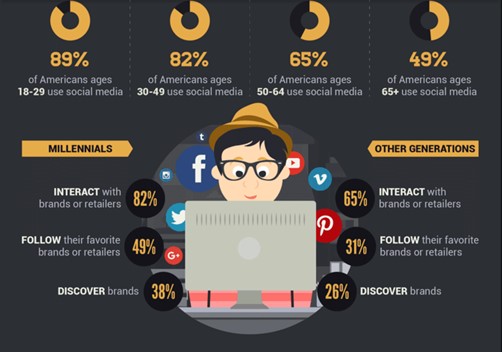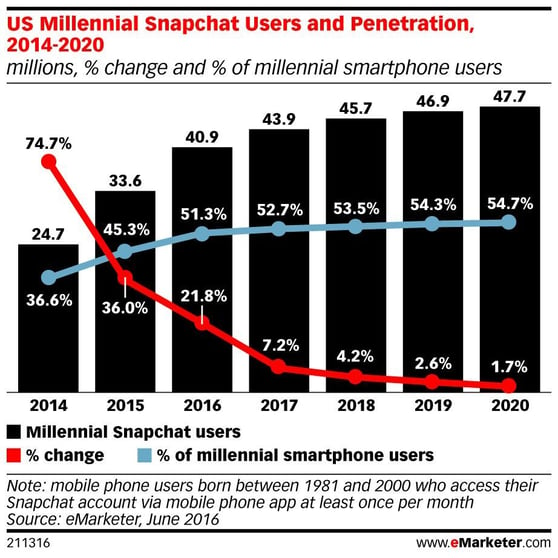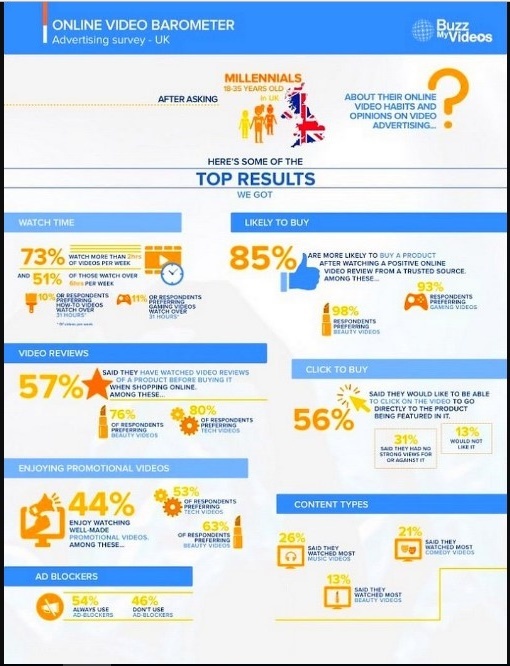With Millennials emerging as the largest demographic now, there’s no surprise that publishers are going far and beyond in order to crack the market with them. Millennials provide a completely unique set of characteristics compared to generation x and baby boomer demographics. But the main question is, why? Why are publishers pushing more of their resources into appealing and catering for millennials, when there are just as many generation x’s out there? The quick answer is simply technology. Millennials are perceived to be tech savvy, with a familiarity with social, media, and digital technologies, and this is where publishers see the potential. Millennials make up 87.5 million Americans, compared to 83.7million generation x, and 66.4 million baby boomers respectively. Essentially what publishers are saying is “There’s more of them, so let’s try and target them”. Research from USC states that 89% of Millennials use social media (see fig.1)
Throughout this blog, we will be highlighting the different styles and techniques that publishers have used in order to try and maximise their ROI regarding millennials.
 (Fig.1)
(Fig.1)
Condé Nast
Snapchat has almost come out of nowhere to being a top platform that publishers want to leave their imprint on, and this is exactly what Condé Nast have realised. eMarketer have predicted that by 2020, millennials will account for 56% of all Snapchat users in the United States (see fig.2). In addition to this, new research from SCG Advertising stated that a whopping 78% of respondents used Snapchat on a daily basis. Condé Nast therefore believes that by investing in Snapchat, they’ll leave a larger imprint on millennials. With that information in mind, Condé Nast reached a deal with Snapchat to create stories around events. Events such as Vanity Fair’s Oscar Party, and Glamour’s Women of the Year Awards. Condé Nast is also forming a team to create weekly content, and is hiring designers, visual editors, and motion-graphic specialists for this project. A lot of investment going into cracking the millennial market, but I personally feel that it’s warranted, as the audience reach that Snapchat has is quite simply incredible. Snapchat itself claims that it reaches 41% of 18-34s in the United States.
 Fig.2
Fig.2
NY Times
If I were to say to you that the largest demographic of NY Times readers are millennials, would you be surprised? Well that’s actually the case believe it or not. The NY Times is pursuing a mobile first strategy, which accounts for 75% of its traffic. The NY Times’ chief revenue officer stated "Our reach to millennials has grown very substantially....Millennials are now the single largest demographic segment of audience on the New York Times (all traffic), and that is incredible." The main reasoning behind this sudden influx is the embracement of The NY Times’ new diverse platforms. Platforms highlighted in my previous blog such as 360° video, virtual reality, and podcasts are just a few of mobile-first approach that the NY Times is taking.
Bustle
Bustle, an American magazine also decided to venture into the millennial targeting, by acquiring Elite Daily ,from Daily mail. The move will also bring a name change, to Bustle Digital Group (BDG). The magazine itself already caters to millennial women, and the CEO of Bustle Bryan Goldberg stated “With the addition of Elite Daily, BDG will reach about 80 million unique monthly viewers per Google Analytics”.
Bustle’s main aims for Elite Daily are to try and boost Bustle’s video and social media efforts. Currently, Elite daily has 6 million Facebook and Instagram followers. This is a wise move in my opinion, as research from BuzzMyVideos (see fig.3) looked at how UK millennials interact with video, and the results are encouraging for Bustle’s strategy. Just for pure speculation, with overwhelming statistics like 80 million monthly readers, just imagine how the potential of paid subscribers that Evolok could help net. It would certainly prove to be very fruitful.
 Fig.3
Fig.3
UK Millennials
Millennials in the UK are very keen in regards to social media. Research from comScore stated that the multi-platform reach of social media amongst UK millennials was the highest in Europe; 97.6%. The research also showed that millennials also spend on average 558 minutes longer on social media sites per month than generation x users. With data like that, it’s clear to see why publishers are taking the punt and trying to maximise their reach to millennials. When Facebook purchased WhatsApp and Instagram, the move brought fantastic results. Some would say that the development of Instagram stories was a clone of Snapchat, but the fact that 200 million people use stories every day, on a 9-month old project is pretty astounding.
Millennials are avid users of technology, and social platforms, and publishers have noticed that. I personally feel that it’s a smart strategy to invest in millennials, especially with the Internet of Things just around the corner. Imagine being able to read a news article on your fridge whilst cooking! The possibilities are endless.
